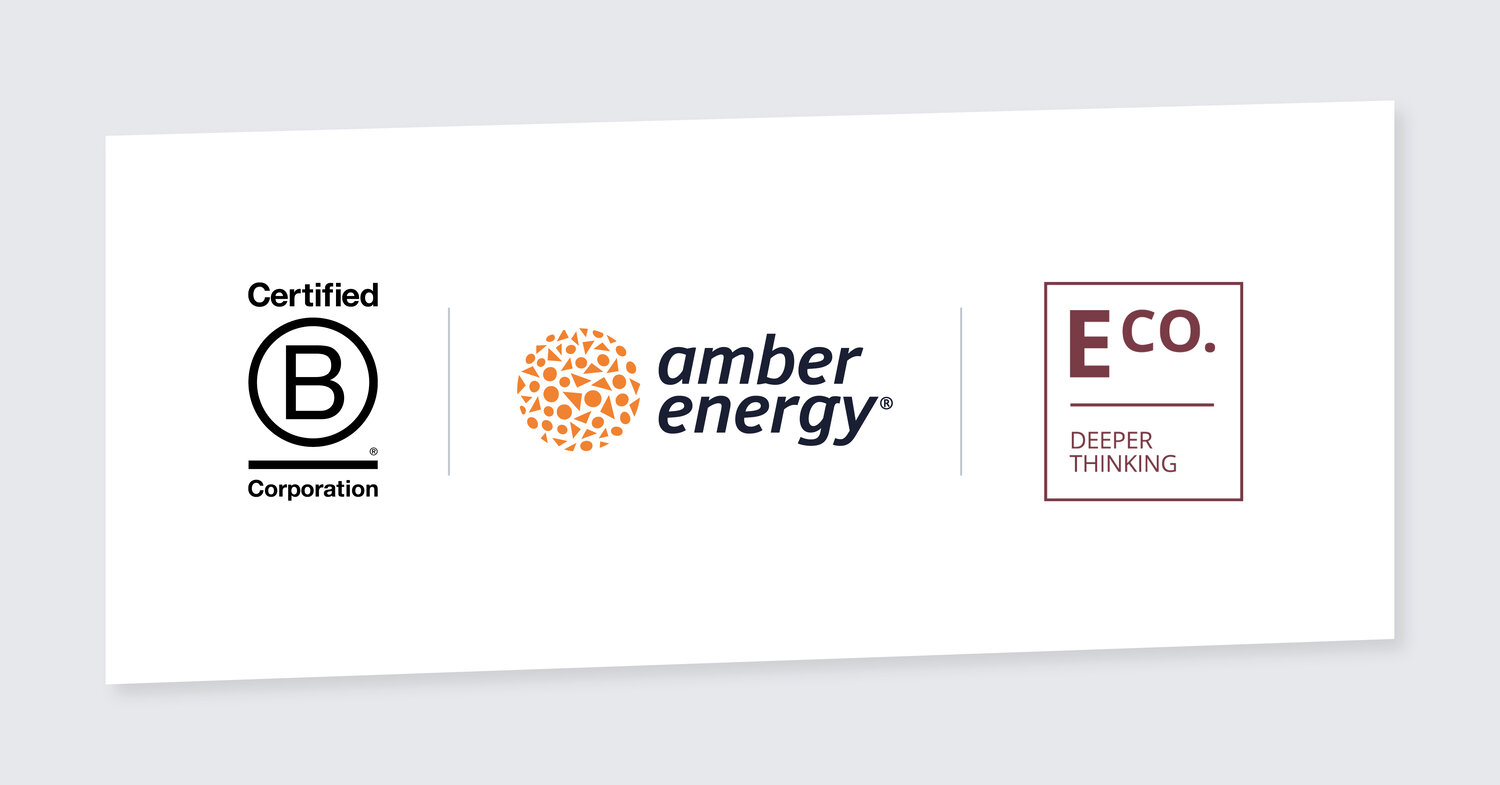B Corp month: 5 Opportunities for UK businesses to go Net Zero
24 March 2021, Category: All insights, News

This article is a joint collaboration between E Co. (Senior analyst Marcus Arcanjo) and amber energy® (Wil Hocking, Technical Account Manager), in celebration of B Corp month. To learn more about our B Corp status and our efforts to improve our business operations, read our Environmental Policy here.
Achieving B Corp status represents a commitment to better business and an understanding that environmental sustainability is essential to achieving positive change.
The B Corp assessment measures impacts across five key areas: environment, governance, customers, community and workers. This means that members of the B Corp community must be serious about creating lasting change in these areas to benefit stakeholders and the wider society.
E Co. achieved B Corp status in 2019, as did amber energy® in 2020. As two proud B Corps, our sense of corporate social responsibility drives us and influences how we meet the needs and ambitions of our clients.
We therefore want to help other businesses to identify opportunities that will allow them to place sustainability at the heart of what they do.
So, for B Corp Month, E Co. and amber have teamed up to share just some of the funding options and schemes available to UK businesses to help them build resilience for the future and deliver on ambitious climate goals.
1. The Industrial Strategy Challenge Fund
This is an innovation-focused programme led by UK Research and Innovation (UKRI) and the Department for Business, Energy and Industrial Strategy (BEIS), aimed at tackling some of the biggest challenges in industry.
The fund is separated across four themes: clean growth, ageing society, future of mobility, and artificial intelligence and data economy.
Over £2.6 billion of public funds and £3 billion matched by the private sector is available and any research organisation, charity or business of any size with innovative solutions can apply. Some of the challenges have already allocated their investments, but many are planning new opportunities.
2. Light as a Service (LaaS)
LaaS allows businesses to limit their costs, increase energy efficiency and reduce their carbon footprint by accessing lighting on a subscription basis based on their needs.
Instead of the high costs of buying, installing and maintaining lighting, businesses simply outsource these responsibilities to the service provider and pay for only the light they use.
Effectively, this model allows businesses to put the savings they make towards the overall cost of the project; and, once the contract ends, the asset can either be handed over to the business to enjoy 100% of the OPEX savings or they can enter a maintenance contract at a reduced rate.
LaaS results in cheaper, more environmentally-friendly lighting that allows money to be kept for core business purposes.
3. Specialist bank or investment management financing
Getting a loan from the bank isn’t always easy. Luckily however, companies with expertise in climate change and energy – or those that focus on funding social-impact projects – often make for viable alternatives.
Many of these companies specifically focus on energy saving and efficiency, renewable energy production and infrastructure.
They also help businesses by investing in their operational CO2 reduction projects, allowing for financial capital to remain within the company.

4. The Industrial Energy Transformation Fund
This fund allows for the development of new technologies that help businesses with high energy consumption transition to a low-emission future.
Companies can apply for up to £14 million in assistance to help with energy efficiency measures and decarbonisation studies.
Equally, numerous regional and local funds provide financial aid to companies wanting to reduce their energy use and costs.
Applications for phase one will close on 14 July 2021, with a second phase to follow later in 2021.
5. Power purchase agreements (PPAs)
A PPA is effectively a long-term (typically 5-20 years) arrangement between a business and the third-party installer, sometimes referred to as a generator.
The agreement defines specific terms like the amount of energy to be supplied and the costs. This provides price certainty by avoiding volatile movements in the energy markets and can help deliver energy savings through renewable energy use.
PPAs can also be used where government subsidies for renewables are ending. Renewable projects often require a third-party funding source, and a wind or solar PPA provides the necessary assurance for lenders.
The generator installs a renewable energy system, such as solar PV or a wind turbine, and sells the energy it produces back to the consumer, often at a lower rate than any available from the grid.
Over the course of the contract, the installation is managed and maintained by the generator and the payments received cover the initial capital costs and profit. At the end of the term, the consumer takes ownership of the asset and can enjoy the benefits of “free” electricity.
Join the conversation by posting a comment below. You can either use your social account, by clicking on the corresponding icons or simply fill in the form below. All comments are moderated.